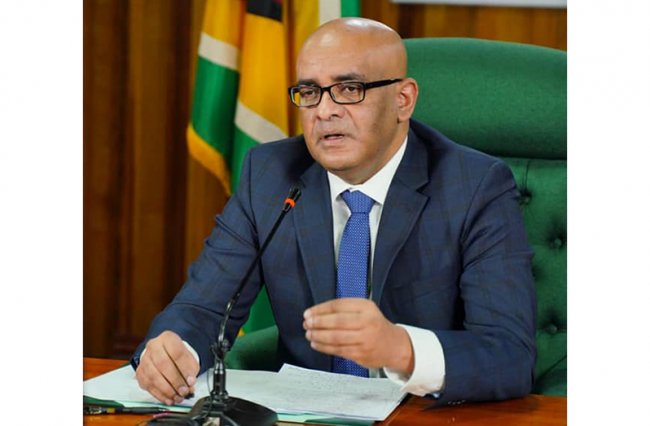Energy costs could be reduced by 80%
Energy costs could be reduced by 80%

— when gas-to-energy project comes on stream; four studies to be conducted
(Guyana Chronicle) THE price paid by Guyana for kilowatt per hour of electricity could be reduced by about 80 per cent when the proposed gas-to-energy project comes on stream.
Preliminary estimates, as outlined by Vice-President, Bharrat Jagdeo, show that Guyana could pay as low as six to seven cents per kilowatt of power depending on the structure of financing and the ownership of this project.
This project forms a major part of the new People’s Progressive Party/Civic (PPP/C) Government’s plan to reduce the overall cost of energy by 50 per cent through an energy mix, which includes the conversion of natural gas from ExxonMobil’s offshore operations to electricity.
President of ExxonMobil’s local operation, Alistair Routledge was reported as saying that about one-fifth of the resources discovered so far in the Stabroek Block contain natural gas, most of which would be associated gas produced with the crude oil. It is common knowledge that natural gas can be used to generate electricity in a variety of ways, but the local plan is to establish an industrial facility that generates electricity from primary energy, which, in this case, is natural gas.
And, contrary to the perception that oil and gas will be detrimental
to the environment, the Government believes that gas-to-energy will go a
long way in ensuring that there is clean energy, because there will be
no more burning of diesel, or ‘Bonasika’ fuel, which is heavy.
The cost factor associated with this project has, however, been a topic
for discussion in the public domain. But, Vice-President Jagdeo believes
that the overarching benefits of this project outweigh any cost
associated with establishing the facilities.
“It could be from US$500 million- US$800 million to develop the
pipeline, depending on the design, geo-technical study and so on… when
we go out to tender that is the only time we will know the actual cost,”
Jagdeo said during a press briefing at the Arthur Chung Conference
Centre on Tuesday.
Another US$300 million is estimated to be spent on the construction of a
power plant, but again, a definitive cost will only be ascertained when
the Government goes to tender.
PREPARATORY STAGES
“We are working through the numbers… remember we are still in the
preparatory stages so a lot of these are estimates, but those are the
magnitude of the types of estimates… one man said it is not feasible,
but how can you determine it is not feasible when you have not done a
feasibility study,” the Vice-President reasoned.
In his view, with power being generated at six cents per kilowatt hour-
about 80 per cent less than the current US$30 cents per kilowatt hour-
the average Guyanese and the private sector would surely benefit. “It is
a no-brainer, the benefits are enormous… the gas is also less polluting
than diesel,” Jagdeo said, noting that definitive projections will soon
be available as the Government is in the process of hiring people to
conduct four sets of studies.
The studies will not only determine the feasibility of the project, but
it will also assess the proposed location for the project, which is
likely to be Wales on the West Bank of Demerara (WBD).
Internal assessments for various sites for the project were conducted
by the former A Partnership for National Unity + Alliance for Change
(APNU+AFC) Coalition administration. And, among the places identified
were Mahaica and Ogle on the East Coast Demerara, Crab Island in the
Berbice River, and Wales.
“We made a conscious decision that we would not bring the project to
Region Four (Demerara-Mahaica) because that corridor is set for major
development, and a lot of industries placed around the oil and gas
facilities might be polluted… so to bring it close to the City would be
disastrous,” Vice-President Jagdeo reasoned.
Wales, he believes, is the better site because it is less costly and the population density there is low.
MASTER PLAN
“We are in the process of creating a master plan for the development of
this area, and this would involve the landing of pipes, the power plant
and the supporting industries,” the Vice-President said. The new
Government had announced last year that it would be establishing a Wales
Development Authority (WDA) to resuscitate the community which was
severely affected by the APNU+AFC’s closure of the Wales Sugar Estate.
And, while there are still plans to form this authority, Jagdeo said the
Government will have to decide whether the gas-to-energy project would
fall under the WDA or Central Government.
A decision in this regard is, however, not a necessity at this time, as
studies, which include an environmental impact assessment, must be
conducted first. The Government is aiming to have the project on stream
by 2023.

